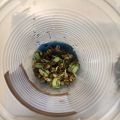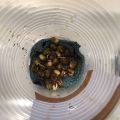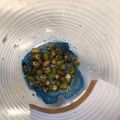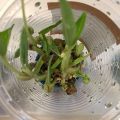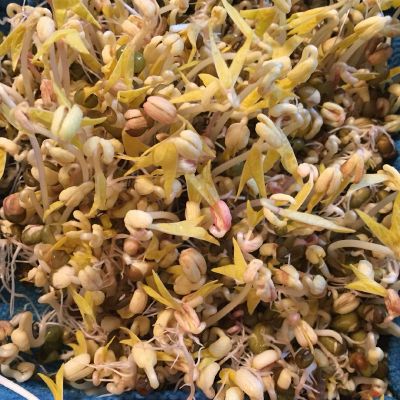No edit summary |
|||
| (2 intermediate revisions by 2 users not shown) | |||
| Line 4: | Line 4: | ||
*1.the most suitable environment for the sprouts grow; | *1.the most suitable environment for the sprouts grow; | ||
*2.how light influence the sprouts grow; | *2.how light influence the sprouts grow; | ||
===2.References=== | ===2.References=== | ||
| Line 10: | Line 10: | ||
*b).links: https://sproutpeople.org/growing-mung-bean-sprouts/ | *b).links: https://sproutpeople.org/growing-mung-bean-sprouts/ | ||
*c).Quality Improvement of Canned Mung Bean (Vigna radiafa) Sprouts R. W. BUESCHER, J. S. CHANG[[ main abstract:The effect of calcium, ascorbic acid, citric acid and EDTA on texture, color and flavor of mung bean sprouts canned as a low-acid food (pH > 4.6) and the effect of acidification by acetic, citric, gluconic, lactic and malic acids on quality of mung bean sprouts canned as an acid-food (pH < 4.6) were examined. Either the addition of calcium or acidification enhanced texture. Texture of products canned as low-acid food increased with decreasing pH. Color was markedly improved by either EDTA combined with ascorbic acid or acidification. Processing in plain (uncoated) cans or treatment with acetic acid was detrimental to flavor. Overall, the best low-acid food product was obtained by the combination of calcium, ascorbic acid, citric acid and EDTA while the best acid-food product was obtained by acidification with gluconic acid.]] | *c).Quality Improvement of Canned Mung Bean (Vigna radiafa) Sprouts R. W. BUESCHER, J. S. CHANG[[ main abstract:The effect of calcium, ascorbic acid, citric acid and EDTA on texture, color and flavor of mung bean sprouts canned as a low-acid food (pH > 4.6) and the effect of acidification by acetic, citric, gluconic, lactic and malic acids on quality of mung bean sprouts canned as an acid-food (pH < 4.6) were examined. Either the addition of calcium or acidification enhanced texture. Texture of products canned as low-acid food increased with decreasing pH. Color was markedly improved by either EDTA combined with ascorbic acid or acidification. Processing in plain (uncoated) cans or treatment with acetic acid was detrimental to flavor. Overall, the best low-acid food product was obtained by the combination of calcium, ascorbic acid, citric acid and EDTA while the best acid-food product was obtained by acidification with gluconic acid.]] | ||
*d)Studies on Physicochemical Properties of Fluorescent Substances in Bean Sprouts[[abstract:Abstract Using six kinds of extraction solvents to study the fluorescent substances in five common bean sprouts of mungbean, soybean, pea, clover and radish, we found that | *d)Studies on Physicochemical Properties of Fluorescent Substances in Bean Sprouts[[abstract:Abstract Using six kinds of extraction solvents to study the fluorescent substances in five common bean sprouts of mungbean, soybean, pea, clover and radish, we found that methanolic extraction had the highest efficiency, followed by ethanol. Among the five bean sprouts, the methanolic extract of mungbean sprouts (MEMS) had the highest fluorescence intensity, with excitation wavelength and emission wavelength of 339 and 395nm, respectively.]] | ||
methanolic extraction had the highest efficiency, followed by ethanol. Among the five bean | |||
sprouts, the methanolic extract of mungbean sprouts (MEMS) had the highest fluorescence | |||
intensity, with excitation wavelength and emission wavelength of 339 and 395nm, | |||
respectively.]] | |||
===3.first experiment=== | ===3.first experiment=== | ||
| Line 119: | Line 114: | ||
File:53.JPG|31.1.2018,13:15pm | File:53.JPG|31.1.2018,13:15pm | ||
</gallery> | </gallery> | ||
===4.conclusion=== | |||
* in the growth process of Mung Bean sprouts ,the most important element is water and temperature . the most proper watering is just keep the Bottom of the container wet; the most suitable temperature is 20 degree -30 degree,those 2 elements can influence the speed of growing instead of light. | |||
* light has a great influence in the color of sprouts leaves, because of there is Chlorophyll in the leaves can turn green from yellow;and actually, the Chlorophyll in Mung bean sprouts can change color in a very short time. | |||
===5.project ideas=== | |||
*by the conclusion , I am going to make the colorful leaves pattern.use a opaque with different shape hole plastic plate cover on the bean sprouts,then cultivate them under strong light in 3-4 hours.then take out the plate ,we can get those colorful leaves pattern。 | |||
Latest revision as of 13:50, 20 February 2018
1.Project subject
- a series experiments about Mung bean sprouts
Three questions i want to detect:
- 1.the most suitable environment for the sprouts grow;
- 2.how light influence the sprouts grow;
2.References
- a)introduction of mung beans:Most Mung Beans are grown in China by farmers - often with little machinery. After harvest they are left to dry on gravel roads - so they are dusty.Mung beans are germinated by leaving them in water for four -five hours of daytime light and spending the rest of the day in the dark. Mung bean sprouts can be grown under artificial light for four hours over the period of a week. They are usually simply called "bean sprouts".
- b).links: https://sproutpeople.org/growing-mung-bean-sprouts/
- c).Quality Improvement of Canned Mung Bean (Vigna radiafa) Sprouts R. W. BUESCHER, J. S. CHANG[[ main abstract:The effect of calcium, ascorbic acid, citric acid and EDTA on texture, color and flavor of mung bean sprouts canned as a low-acid food (pH > 4.6) and the effect of acidification by acetic, citric, gluconic, lactic and malic acids on quality of mung bean sprouts canned as an acid-food (pH < 4.6) were examined. Either the addition of calcium or acidification enhanced texture. Texture of products canned as low-acid food increased with decreasing pH. Color was markedly improved by either EDTA combined with ascorbic acid or acidification. Processing in plain (uncoated) cans or treatment with acetic acid was detrimental to flavor. Overall, the best low-acid food product was obtained by the combination of calcium, ascorbic acid, citric acid and EDTA while the best acid-food product was obtained by acidification with gluconic acid.]]
- d)Studies on Physicochemical Properties of Fluorescent Substances in Bean Sprouts[[abstract:Abstract Using six kinds of extraction solvents to study the fluorescent substances in five common bean sprouts of mungbean, soybean, pea, clover and radish, we found that methanolic extraction had the highest efficiency, followed by ethanol. Among the five bean sprouts, the methanolic extract of mungbean sprouts (MEMS) had the highest fluorescence intensity, with excitation wavelength and emission wavelength of 339 and 395nm, respectively.]]
3.first experiment
to explore a relative normal environment for Mungbeans sprouts as the standard experiment.
experiment progress :
- container:a flat bottom has a hole container, a block of wet cloth on the bottom;
- temprature:control the constant temperature-put the contanier on the hinter
- light:normal light with a change of day and night; use a cloth to always cover on one half of the container and set up a no light environment.
- water: watering them 2-3 times a day 36 degree around running water.
consequence:
- in 72 hours, the sprouts reach up to 12cm around .
- light has no obvious influence on the length of sprouts ,but the color of their leaves .
- water is important in the growth of sprouts .
second experiment
- 1.use the pre-experiment as the contrast one , and do the 3 different experiment to detect the Mungbeans's growth in different environment :
- A:standard one
1. container:container with hole and wet cloth on the bottom 2. water:water beans sprouts 2-3 times a day with 36 degree around running water 3. temperature :put it on the hinter control it around 36-40 degree's 4. light :changeable light and night
- B: contrast with A in temprature:
1. container:container with hole and wet cloth on the bottom 2. water:water beans sprouts 2-3 times a day with 36 degree around running water 3. temperature :put it on outdoor control it around 0-5 degree's 4. light :changeable light and night
- C: contrast with A in nutrition liquid :
1. container:container with hole and wet cloth on the bottom 2. water:water beans sprouts 2-3 times a day with 36 degree around with some agar in water 3. temperature :put it on the hinter control it around 36-40 degree's 4. light :changeable light and night
- D: contrast with A in light :
1. container:container with hole and wet cloth on the bottom 2. water:water beans sprouts 2-3 times a day with 36 degree around with running water 3. ttemperature :put it on the hinter control it around 36-40 degree's 4. light :contact light with a table lamp.
third experiment
- 50g mung beans
- Nutritional fluid:milk,cola,water,coffee
- environment:light;20-30degree temperature
experiment progress: to detect the flavor by watering them with different Nutritional fluid
result: except for the portion of water, they all stop growing.
- rescue: watering them water again to see if they are just sleep or die.
forth experiment
to see the different color with light or no light a)organism:
- mung bean sprouts (grown up in no light environment )
31.1.2018 the rescue didn't work,the sprouts don't like cola,coffee and milk and they all died.
continuing to observe the changing of sprouts'color in the light.
organism :Mungbean sprouts leaves with different color.
method:make two portion of sprouts leaves one a plate with the strong light. the above portion' leaves are off the mother body the below portion' leaves are not off the mother body
consequences :they are all turn green in the same time and at the same speed.
4.conclusion
- in the growth process of Mung Bean sprouts ,the most important element is water and temperature . the most proper watering is just keep the Bottom of the container wet; the most suitable temperature is 20 degree -30 degree,those 2 elements can influence the speed of growing instead of light.
- light has a great influence in the color of sprouts leaves, because of there is Chlorophyll in the leaves can turn green from yellow;and actually, the Chlorophyll in Mung bean sprouts can change color in a very short time.
5.project ideas
- by the conclusion , I am going to make the colorful leaves pattern.use a opaque with different shape hole plastic plate cover on the bean sprouts,then cultivate them under strong light in 3-4 hours.then take out the plate ,we can get those colorful leaves pattern。









